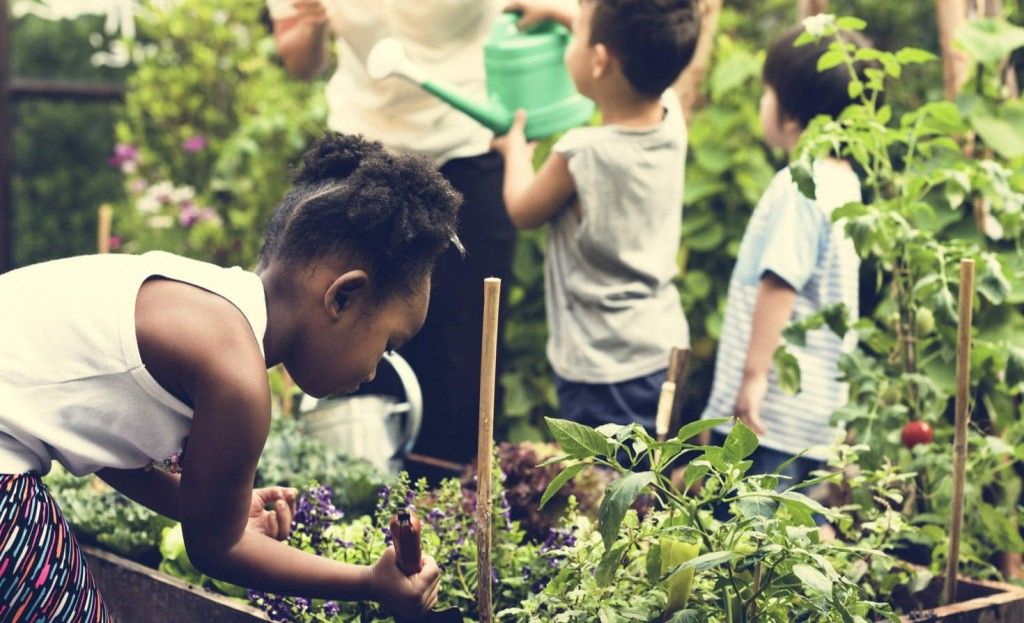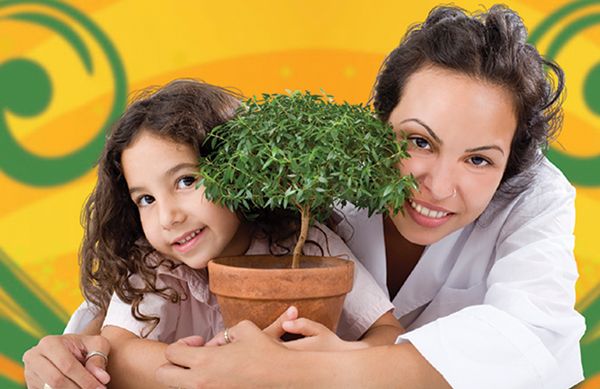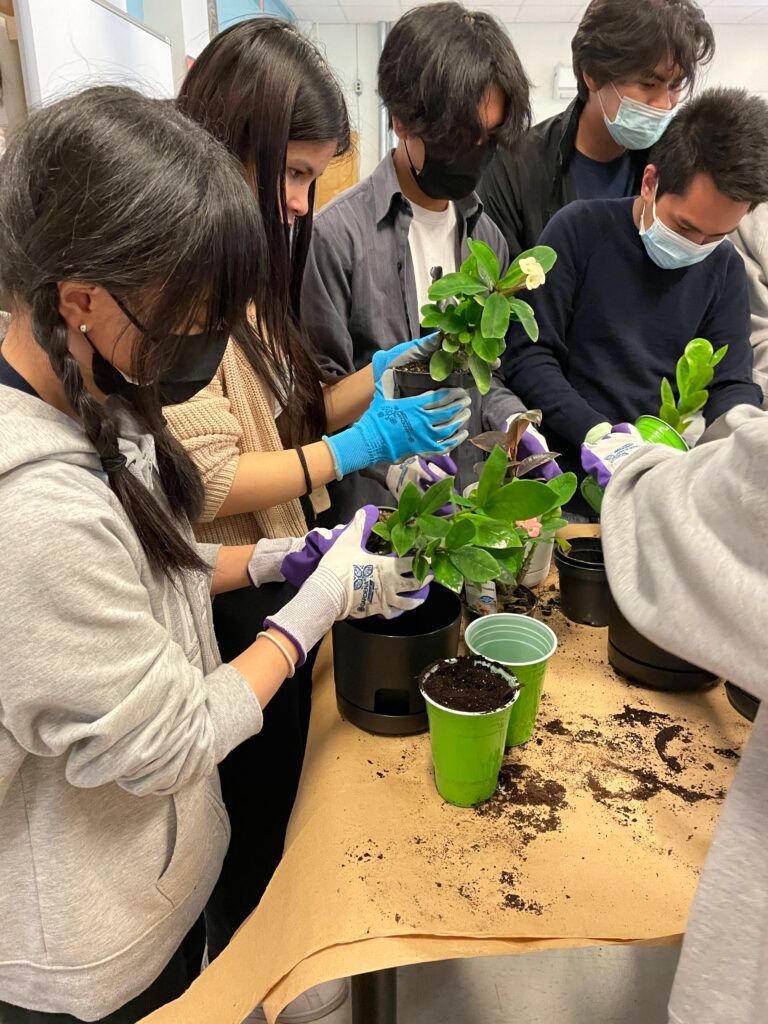@Ana_moderator
My team actively uses Google doc for workflow, there is a file 'Library' which is my favourite, we meet on weekly basis to discuss a book. Our focus is the development of functional literacy in students. We want to gain knowledge and expertise from PISA, PISA for schools assessment approaches from OECD library.
-
Ideas for you_Greening classrooms with EdTech solutions
-
@Bilim this sounds great! You said you meet every week - do you cut the book into small pieces and read by chapters?
-
Thank you @Ana_moderator we assign a task to prepare a book review to discuss what ideas can be drawn from it, wether it is worth using as a reference for the project goals.
-
 @Bilim
@Bilim
 Greening classrooms with EdTech solutions is a fantastic initiative that can both enhance learning experiences and promote environmental consciousness. Here are some ideas to achieve this:-
Virtual Field Trips: Use virtual reality (VR) or augmented reality (AR) technology to take students on virtual field trips to eco-friendly locations like national parks, renewable energy plants, or sustainable farms. This reduces the carbon footprint associated with physical travel while still providing valuable educational experiences.
-
Online Collaboration Platforms: Implement online collaboration platforms that allow students to work together on projects and assignments without the need for paper. Platforms like Google Classroom, Microsoft Teams, or Edmodo can facilitate seamless communication and document sharing, reducing paper waste.
-
Digital Textbooks and Resources: Transition from traditional paper textbooks to digital textbooks and online resources. This not only saves trees but also lightens students' backpacks and provides them with interactive learning materials that can be updated easily.
-
Energy-Efficient Devices: Opt for energy-efficient devices such as laptops, tablets, and interactive whiteboards in the classroom. Look for devices with Energy Star certification or similar standards to minimize energy consumption.
5.Online Learning Platforms for Environmental Education: Integrate online learning platforms focused on environmental education into the curriculum. Platforms like Khan Academy, National Geographic Kids, or BBC Bitesize offer engaging content on topics like climate change, conservation, and sustainability.
-
Smart Building Technologies: Implement smart building technologies to optimize energy usage within the classroom. This can include smart thermostats, occupancy sensors, and automated lighting systems that adjust based on natural light levels and occupancy.
-
ata Visualization Tools for Environmental Studies: Use data visualization tools to help students understand complex environmental concepts. Platforms like Tableau Public or Infogram can help students analyze and visualize data related to topics like carbon emissions, biodiversity, and renewable energy production.
-
Gamification for Environmental Awareness: Gamify environmental education using EdTech platforms. Create interactive games and quizzes that challenge students to make eco-friendly choices and learn about environmental issues in a fun and engaging way.
-
Remote Learning for Reduced Commuting: Encourage remote learning options to reduce the carbon footprint associated with commuting to school. Virtual classrooms and online lectures can be effective alternatives, especially for days when weather conditions or other factors make it challenging to travel to school.
-
Student-Led Green Initiatives: Empower students to lead green initiatives within the classroom and school community. EdTech solutions can be used to facilitate project planning, communication, and collaboration among students interested in implementing sustainability practices.
By incorporating these EdTech solutions, classrooms can become greener spaces that not only educate students about environmental issues but also model sustainable practices for the future.
this is my web site:
https://connectinngclassrooms.wordpress.com/"Empowering students through engaging education, fostering environmental consciousness, and advancing scientific literacy. Committed to shaping future leaders in Life and Earth Sciences."
-
-
 
 
One simple idea for greening classrooms with EdTech solutions is to implement digital textbooks and educational materials. By transitioning from traditional paper-based resources to digital ones, schools can significantly reduce paper usage, thereby conserving trees and reducing their carbon footprint. Additionally, digital resources can be updated easily, reducing the need for frequent reprints and further minimizing waste. Moreover, interactive digital textbooks can enhance student engagement and learning outcomes. This shift towards digital resources not only promotes sustainability but also embraces modern teaching methods, making education more dynamic and accessible."Empowering students through engaging education, fostering environmental consciousness, and advancing scientific literacy. Committed to shaping future leaders in Life and Earth Sciences."
-
Our school uses Google Classroom to assign lessons and tasks. unfortunately we do not have access to Padlet and Trello now, we used to use them regularly. We introduced Netboard recently to replace Padlet and Notion. Google docs are widely used by our school.
-
try Microsoft tools

"Empowering students through engaging education, fostering environmental consciousness, and advancing scientific literacy. Committed to shaping future leaders in Life and Earth Sciences."
-
My favourite tool would be using games to greening Edtech in classrooms. My students enjoys playing games the most in every lessons we did. So, I would go for a method to gamify the solutions.
-
Hi Sahar,
That is very cool, you are combining gamification and use of technology. Gamifying education make learning more engaging and enjoyable for our students. Once we integrate games into our lessons, we can capture their interest and make complex concepts more accessible. It's great to hear that your students already respond well to this method.
To take it a step further, you could develop or utilize educational games that focus on environmental awareness and sustainability. This way, you're not only enhancing their literacy skills but also instilling important values about caring for the environment. Games that involve problem-solving, critical thinking, and collaboration can be particularly effective.
Keep doing great,
Mr. Bryan -
Dear colleagues, thank you for sharing!
I would like to add that in our school we also encourage our students to start greening initiatives, as part of their community service or as part of their subject units. For example, in my English language lessons the students had a summative assessment task of promoting a green campaign within the school through social media. They came up with the ideas of effective use of resources, saving paper, saving water etc which also boosted the students' motivation and led to a deeper unquiry and understanding.
-
@Ekaterina-P
Hi Ekaterina,
hope everything is going well.Love to see "Motivation" as part of your post. For sure integrating greening initiatives into our curriculum is a wonderful way to engage students in meaningful community service while enhancing their learning experience. I think that all here in the forum are example of good practices about this topic.
Your example of the English language lesson is particularly cool and is aligned with their interests and undoubtedly with the historical moment they are living in. Promoting a green campaign through social media not only encourages creativity, collaboration, communication skills but also instills important values of environmental stewardship.
Best,
Mr. Bryan -
@Bilim That`s really great that you try to reduce using of paper docs and use google-cloud which is very eco-friendly and really helpful for the environment. Also, it forms correct and careful students' treatment to nature
-
Global Grants
 for environmental projects
for environmental projectsHi everyone,
If you are looking for Environmental Sustainability help ESRAG members are happy to share their technical expertise, guidance, and experience to help clubs and districts plan implement impactful environmental global grant projects.
They are experienced Rotary members and nonmembers around the world who are dedicated to helping clubs and districts develop sustainable environmental projects.
Link: https://esrag.org/global-grants/
Best of luck.
Mr. Bryan -
I think we can organise digital timelines for event happend in history. It will help students to understand more better about historical events.
For digitalizing English can arrange a weekly programme of conversation by using computers
We can also arrange digital stories in morning assembly program in which student could be allowed to see a moral story on laptop or computers or mobile and that msg of morality should be integrated into all subjects. It will help in child moral development. -
Green education is not merely about imparting knowledge; it is about nurturing a generation of environmentally conscious and responsible citizens. By integrating green principles into education systems, we can empower individuals to become active agents of change and contribute to a sustainable future for all.
DR/Reham
-
@Ana_moderator Yes, I already use digital textbooks and resources, online assignments and assessments, and cloud storage for managing classroom activities.
My Favorite Tool and Why:
Google Classroom:
Google Classroom is my favorite tool because it seamlessly integrates various functions needed for a green classroom. It allows for easy distribution of digital materials, assignment management, and communication with students, all in one platform. Its user-friendly interface and wide range of features make it an ideal choice for fostering a paperless, eco-friendly learning environment. -
@Reham125b5a4afa
Hello,
Indeed greening education should be included across the curriculum globally. It is the prime duty of teachers to sentisize the young learners about the importance of greening because they are future citizens who are the agents of change as you highlighted. I completely agree by educating the young mind about the importance of having a green society, it will ultimately result in a sustainable world. In my school, the Eco Club is implementing several projects to make our school a green one. Will post a few pictures of the work being done. It involves the students, educators, NGOs, the community and other stakeholders. -
@Ana_moderator It is a great topic. I use virtual lab in biology sessions.
-
@Ana_moderator EdTech solutions can significantly contribute to greener education by reducing paper usage, minimizing transportation emissions, and raising environmental awareness among students. Tools like digital textbooks, online learning platforms, virtual field trips, remote learning technologies, environmental education apps, green STEM projects, online environmental simulations, energy monitoring systems, and digital collaboration tools can all support these efforts.
Do you already use any of these tools? Or do you have more tools to add? What is your favorite tool and why?
Answer:Yes, I use Google Classroom and Zoom. My favorite is Google Classroom because it streamlines material distribution, communication, and grading, making administrative tasks easier and improving the learning experience for students.
Tabassum Laghari
Science Teacher
Sindh, Pakistan -
@Ana_moderator EdTech solutions can significantly contribute to greener education by reducing paper usage, minimizing transportation emissions, and raising environmental awareness among students. Tools like digital textbooks, online learning platforms, virtual field trips, remote learning technologies, environmental education apps, green STEM projects, online environmental simulations, energy monitoring systems, and digital collaboration tools can all support these efforts.Do you already use any of these tools? Or do you have more tools to add? What is your favorite tool and why?Answer:Yes, I use Google Classroom and Zoom. My favorite is Google Classroom because it streamlines material distribution, communication, and grading, making administrative tasks easier and improving the learning experience for students.
Tabassum Laghari
Science Teacher
Sindh, Pakistan